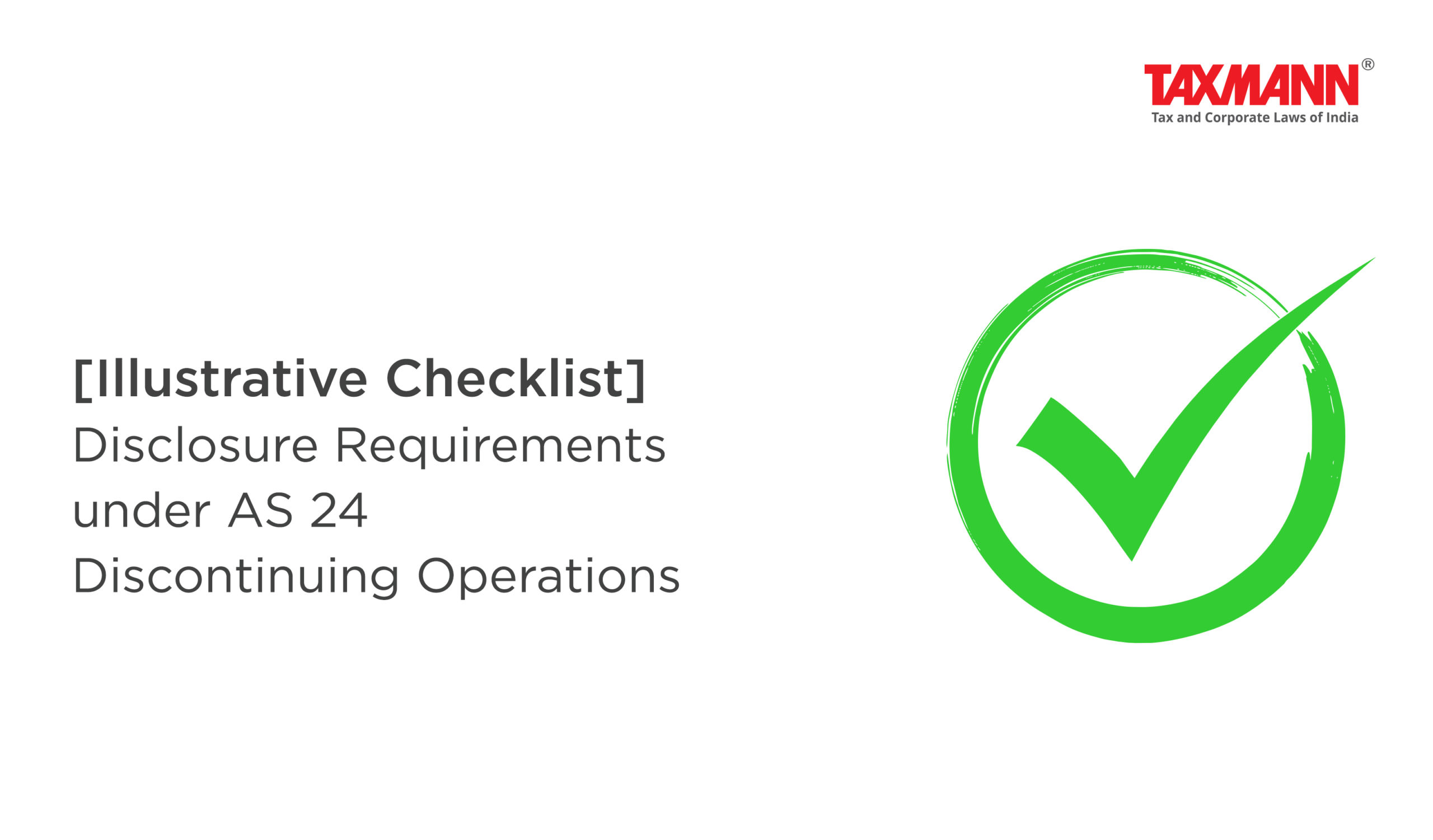[Illustrative Checklist] Disclosure Requirements under AS 24 | Discontinuing Operations
- Blog|News|Account & Audit|
- 2 Min Read
- By Taxmann
- |
- Last Updated on 29 May, 2023
The objective of AS 24, Discontinuing Operations, is to establish principles for reporting information about discontinuing operations, thereby enhancing the ability of users of financial statements to make projections of an enterprise’s cash flows, earnings-generating capacity, and financial position by segregating information about discontinuing operations from information about continuing operations. This Standard applies to all discontinuing operations of an enterprise. An enterprise should apply the principles of recognition and measurement that are set out in other Accounting Standards for the purpose of deciding when and how to recognise and measure the changes in assets and liabilities and the revenue, expenses, gains, losses and cash flows relating to a discontinuing operation. A checklist can be a useful tool to ensure that all necessary disclosures are made in accordance with the discussed standard. Below is an illustrative checklist that entities may use to comply with AS 24 requirements.
I. Has the enterprise disclosed the fact, reasons, and effect when it abandons or withdraws from a plan that was previously reported as a discontinuing operation
II. Whether the disclosures required under this standard have been presented separately for each discontinuing operation
III. Has the entity restated comparative information for prior periods to segregate assets, liabilities, revenues, expenses and operations in a manner similar to that required above, which is presented in financial statements prepared after the initial disclosure event
IV. Has the enterprise disclosed the following information pertaining to a discontinuing operation in its financial statements, starting from the financial statements of the period in which the initial disclosure event (as defined in paragraph 15 of AS 24) takes place:
a. A description of the discontinuing operation? (disclosed in notes to financial statements)
b. The business or geographical segment(s) in which it is reported as per AS 17, Segment Reporting? (disclosed via Notes to financial statements)
Click Here To Read The Full Story
Disclaimer: The content/information published on the website is only for general information of the user and shall not be construed as legal advice. While the Taxmann has exercised reasonable efforts to ensure the veracity of information/content published, Taxmann shall be under no liability in any manner whatsoever for incorrect information, if any.

Taxmann Publications has a dedicated in-house Research & Editorial Team. This team consists of a team of Chartered Accountants, Company Secretaries, and Lawyers. This team works under the guidance and supervision of editor-in-chief Mr Rakesh Bhargava.
The Research and Editorial Team is responsible for developing reliable and accurate content for the readers. The team follows the six-sigma approach to achieve the benchmark of zero error in its publications and research platforms. The team ensures that the following publication guidelines are thoroughly followed while developing the content:
- The statutory material is obtained only from the authorized and reliable sources
- All the latest developments in the judicial and legislative fields are covered
- Prepare the analytical write-ups on current, controversial, and important issues to help the readers to understand the concept and its implications
- Every content published by Taxmann is complete, accurate and lucid
- All evidence-based statements are supported with proper reference to Section, Circular No., Notification No. or citations
- The golden rules of grammar, style and consistency are thoroughly followed
- Font and size that’s easy to read and remain consistent across all imprint and digital publications are applied






 CA | CS | CMA
CA | CS | CMA


